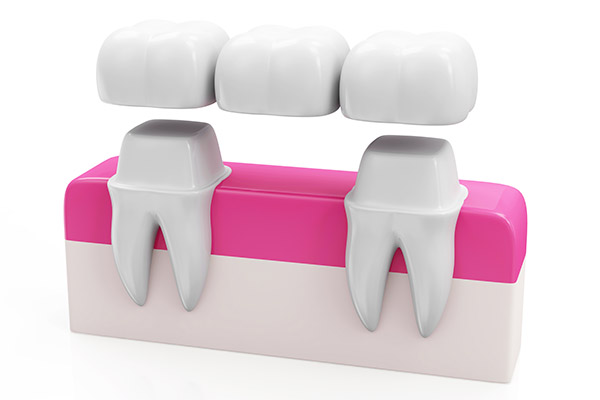 The bridge is a dental repair that is cemented in place and is used to replace missing teeth. It is done by attaching an artificial tooth definitively to an adjacent tooth, be it natural or artificial. In most cases, crowns are artificial teeth paired with bridges. They are usually made from porcelain or blended resin. Furthermore, dental implants and dental bridges can be used together to build a strong replacement for your lost tooth.
The bridge is a dental repair that is cemented in place and is used to replace missing teeth. It is done by attaching an artificial tooth definitively to an adjacent tooth, be it natural or artificial. In most cases, crowns are artificial teeth paired with bridges. They are usually made from porcelain or blended resin. Furthermore, dental implants and dental bridges can be used together to build a strong replacement for your lost tooth.
A dental bridge is a great replacement alternative that you may want to consider when replacing your lost teeth. Dental bridges, unlike dentures, are attached in place such that sliding doesn't occur and no bulk is hanging out of your mouth. On the other hand, dental bridges require one fixture to replace one tooth. More than a tooth can be replaced with a bridge.
Replacing missing teeth with a bridge, the process
Whether your teeth are natural or artificial, the process is the same. The dentist will fasten the fixture to your teeth on either side of the gap. The adhesive or bond will keep the bridge in place so that the space between the teeth can be effectively closed. The process of dental bridging is long because it must be tailored to fit and size your mouth. However, the commitment is often worth it as it allows patients to eat, speak without lisping, and have beautiful smiles.
Several teeth can be replaced
The number of teeth that a dental bridge can be used to replace is dependent on your need. It can be used to replace missing teeth ranging from one to four. In some unique situations, a bridge can take the place of more than four teeth. Certain factors must be in play for this to happen, however.
- There must be sufficient teeth existing in the mouth to attach to dental crowns.
- The teeth the bridge will be anchored to have to be in great shape: this is so because the dental bridge will be at risk of coming loose if the teeth or anchor is not strong enough to hold them.
- Another aspect of this is fixing more than two teeth; the bridge may not be whole. Four missing teeth will require an enormous detail bridge. The wider your dental bridge spans, the less reliable it will be.
So, a dental bridge that replaces more than two teeth without the above conditions met may be risky.
Choose a bridge to fix that gap
If you haven't lost too many teeth, a dental bridge is what you need to replace missing teeth. Below are some reasons that should convince you to opt for bridges:
- Bridges don’t compel you to have oral surgery.
- Bridges are cheap to get and are likely covered by your dental insurance.
- Placing a bridge is fast.
Ultimately, only your dentist can tell you which option would be the right procedure for you and your glorious smile.
Related Posts
Looking into options for replacing missing teeth? Read on to learn more about available tooth-replacement options. Replacing missing teeth is one of the most common reasons patients seek a complete mouth restoration. There are many treatment choices available, and it is recommended that you learn about each one before choosing. Throughout the planning phase, the…
Many circumstances might cause you to look into replacing a missing tooth, regardless of your age. Those who do not take care of their teeth and gums are at particularly high risk for tooth loss, as both gum disease and decay can damage gums, tooth roots, and teeth. Cavities can lead to significant damage, as…
People with multiple missing teeth have many options to consider. This article provides an overview of options for replacing multiple missing teeth. Since there are so many choices, making a selection can be an issue. Some tooth replacement options are not suitable for particular cases, which means patients need to take their time to review…


